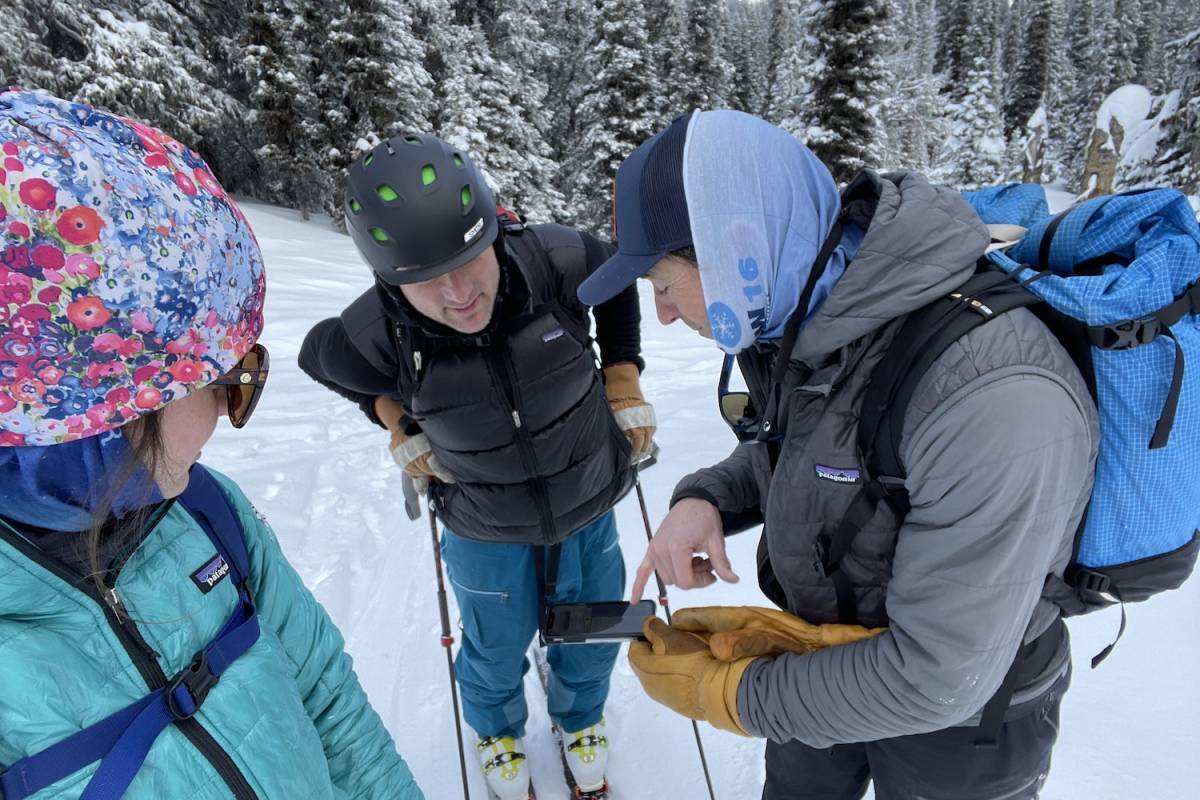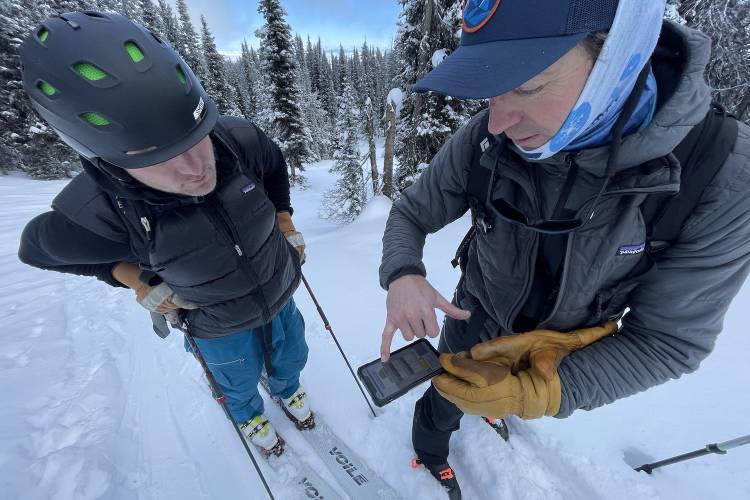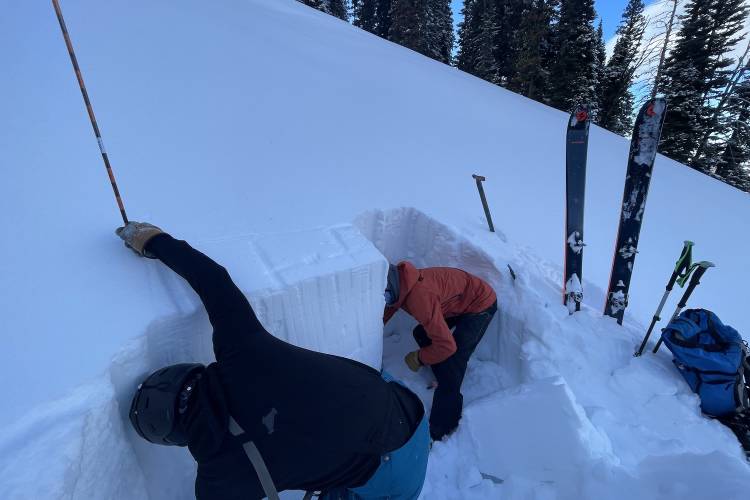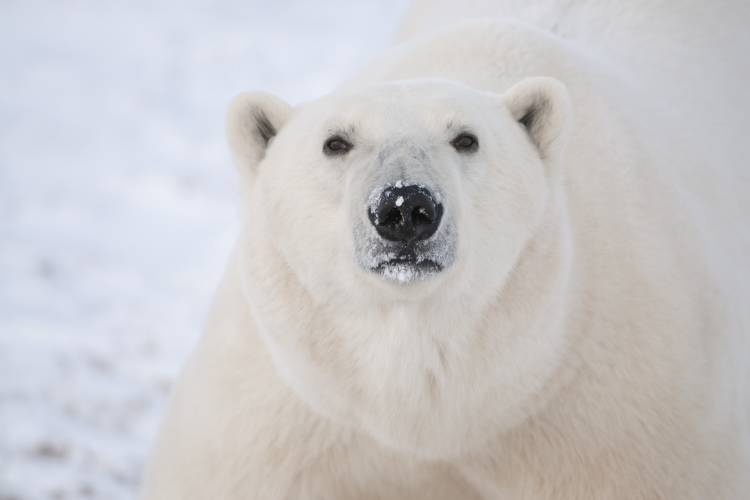“How do you plan to improve how we attach the solar panels this year?” I asked my colleague, BJ Kirschhoffer, one late January day in our office in Bozeman, Montana. He walked over with a new design he'd drawn up on his computer and printed with a 3D printer, talking me through the concept he’d engineered himself.

Photo: Kt Miller / Polar Bears International
Kt Miller and BJ Kirschhoffer refresh their wilderness safety training with a local ski instructor and guide in the mountains outside their home in Bozeman, Montana.
Arctic Logistics: The Nuts and Bolts of Fieldwork
by Kt Miller, Director of Field Programs and Relations
MINS
11 Feb 2023

Photo: Kt Miller / Polar Bears International
Every year, January and early February are a blur of gear preparations and logistics for the two of us as we get ready to head to Svalbard, Norway for our annual Maternal Den Study in the partnership with the Norwegian Polar Institute and the San Diego Zoo Wildlife Alliance. We tweak systems, order the nuts and bolts that—literally—hold our equipment together, and toss ideas back and forth. We also hold planning meetings with partners and colleagues over Zoom, run through checklists, order and ship equipment, and consult maps, piecing together the puzzle for this year’s fieldwork. BJ takes the lead on the tech innovation and engineering side, while I work to support the logistics, safety, and storytelling aspects of the research—and anything else that comes up along the way.
Our annual prep work also includes time devoted to refresher safety courses. The terrain in Svalbard is complex; snow-covered peaks rise from the ocean, massive glaciers terminate at frozen fjords that are locked in by sea ice—and challenges include huge distances, frigid temperatures, and unpredictable weather. The combination of hazards requires skill to navigate, travel through, and safely return. For that reason, we take courses to refresh our skills each year. These courses include avalanche awareness and partner rescue, crevasse rescue, wilderness first aid, snowmobile maneuvering and safety, and firearms practice with nonlethal deterrents to help us manage any potential encounters with polar bears (which we take extensive measures to avoid in the first place).

Photo: Kt Miller / Polar Bears International
This year BJ and I spent a day in the mountains outside our home in Bozeman, Montana with a local ski instructor and guide—refreshing our avalanche terrain identification skills, practicing rescuing someone buried in an avalanche, and setting up pulley systems to extract someone or something (like a snowmobile!) that has accidentally fallen into a crevasse. Of course, the ideal scenario is to avoid these situations, but you always want to be prepared for the worst.
As we spent the day walking on skis through the mountains, I couldn’t help but ponder how worlds collide, at least for me. Prior to working full time for Polar Bears International, I spent my twenties traveling the world as a photographer, skier, and mountain guide. At the time I always hoped to use my skills in the Arctic, but I never imagined just how directly related they would be to our work. I also loved to build things and tinker with equipment—from helping my carpenter father roof houses and build cabins, to mounting and tuning my own skis. It’s truly challenging and deeply rewarding to combine using drills and wrenches with cameras, skis, and mountain guiding. And of course I’ve learned a few things about polar bears after being surrounded by amazing scientists along the way.

Photo: Kt Miller / Polar Bears International
The team refreshes their avalanche awareness skills.
Each year of our maternal denning research has unique challenges to overcome and planning details to sort out (there is no such thing as plug and play in Arctic research). As we refine systems and further develop the methods that support our tech-based research projects, things do get easier, and then it seems a new challenge arises, I’m sure this year will be no different. As I write this we are placing our last orders for supplies, preparing to assemble new equipment, scheduling our remaining trainings, and in just a few weeks we will be packing our bags—I cannot believe our Svalbard fieldwork season is less than a month away!















